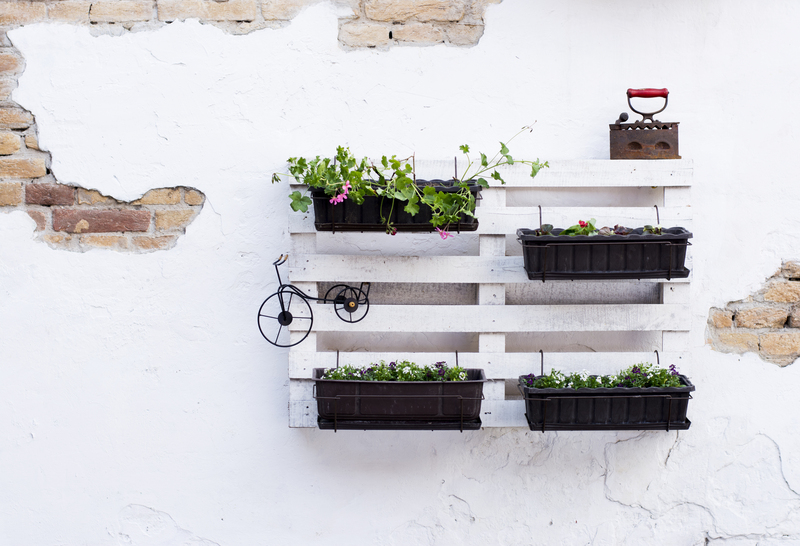How to Convert Your House into an Eco-Friendly Sanctuary
As the world becomes more environmentally aware, many homeowners are seeking ways to transform their homes into eco-friendly sanctuaries. Creating a sustainable living space not only helps the planet but also enhances your health and can reduce costs over time. This comprehensive guide will walk you through the steps needed to make your home a haven of sustainability.
The Importance of Eco-Friendly Living
Adopting an eco-friendly lifestyle is crucial for the health of our planet and ourselves. By reducing our carbon footprint, conserving energy, and using sustainable materials, we can contribute to a healthier environment while minimizing pollution and waste. An eco-friendly home is also efficient, which can lead to significant financial savings on utility bills.
Assess Your Current Home Structure
Before embarking on your eco-friendly journey, it's important to understand the current state of your home. Performing an energy audit will help identify areas that need improvement. This will provide you with a roadmap for converting your house into a sustainable sanctuary.

Steps to Make Your Home Eco-Friendly
1. Improve Energy Efficiency
Energy efficiency is a cornerstone of an eco-friendly home. By reducing energy consumption, you decrease the demand for fossil fuels, ultimately lowering carbon emissions.
- Insulation: Ensure your home is properly insulated to maintain temperature and reduce heating and cooling costs.
- Energy-Efficient Appliances: Invest in appliances that have high Energy Star ratings. They use less energy and water than traditional models.
- LED Lighting: Replace incandescent bulbs with LED lighting, which uses up to 75% less energy and can last up to 25 times longer.
- Smart Thermostats: Install smart thermostats to optimize heating and cooling schedules, reducing energy waste.
2. Harness Renewable Energy
Switching to renewable energy sources is a powerful way to minimize your environmental impact.
- Solar Panels: Installing solar panels will harness the sun's energy to power your home, significantly cutting electricity costs.
- Wind Turbines: If feasible, consider small wind turbines as an alternative or additional energy source.
3. Water Conservation Techniques
Conserving water not only protects a valuable resource but also saves on utility bills.
- Low-Flow Fixtures: Install low-flow showerheads and toilets, which can reduce water usage by up to 60%.
- Greywater Systems: Consider a greywater reclamation system to reuse water from sinks, showers, and washing machines for irrigation.
- Rainwater Harvesting: Use rain barrels to collect and store rainwater for garden and landscape irrigation.
4. Use Sustainable Building Materials
When renovating or building new additions to your home, opt for sustainable materials that have a low environmental impact.
- Bamboo Flooring: Bamboo grows quickly and regeneratively, making it an excellent eco-friendly alternative to hardwood.
- Recycled Materials: Use materials made from recycled content, such as glass countertops or reclaimed wood, to minimize resource extraction.
- Low-VOC Paints: Select paints with low volatile organic compounds for healthier indoor air quality.
5. Foster Indoor Air Quality
Ensuring good indoor air quality is significant for the health of your household.
- Houseplants: Incorporate houseplants, such as spider plants or peace lilies, which naturally filter toxins from the air.
- Ventilation Systems: Use energy-efficient systems to maintain airflow and manage humidity levels, preventing mold growth.
- Non-Toxic Cleaning Products: Choose cleaning products free from harsh chemicals to limit exposure to toxins.

Additional Tips for a Green Lifestyle
Engage in Sustainable Practices Daily
- Reduce Waste: Practice recycling, composting, and minimizing your household waste wherever possible.
- Conscious Consumption: Buy sustainably sourced products and support businesses committed to reducing their carbon footprint.
- Gardening: Grow your own fruits and vegetables, use compost for soil enrichment, and avoid chemical pesticides.
Community and Beyond
Think beyond your property lines. Engage with neighbors and local organizations to promote community actions towards a sustainability.
- Green Communities: Participate in or help create a neighborhood initiative focused on reducing carbon emissions.
- Environmentally Friendly Transport: Advocate for and utilize public transport, bike lanes, carpooling options, and electric vehicle charging stations.
Concluding Thoughts
Transforming your home into an eco-friendly sanctuary is a rewarding process that benefits you, your local community, and the planet. By taking the steps to enhance energy efficiency, harness natural resources, conserve water, and opt for sustainable materials, you can create a living space that is not only comfortable but also conscientious. Remember, every change, no matter how small, contributes to a greener, more sustainable future.
Start your journey today by assessing your current home structure and planning improvements that will have a positive environmental impact. Together, we can create a healthier planet for future generations.
Be the change. Make your house more than just a home; transform it into an eco-friendly sanctuary that reflects your commitment to sustainability.